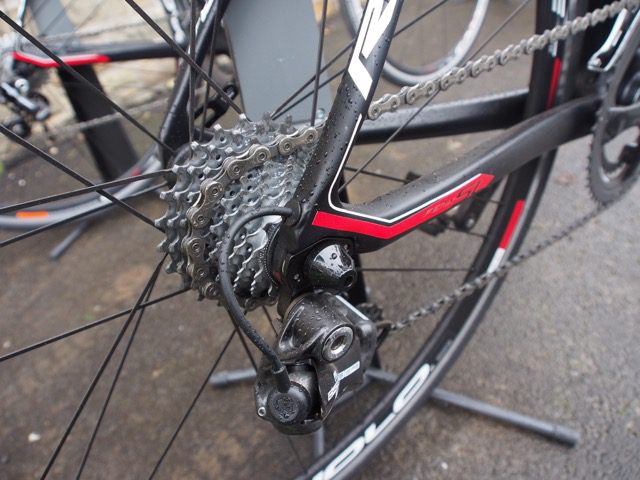Is the quick release on its way to extinction?
The quick-release connection is secure, so why has the industry chosen the thru axle? Can the quick release survive this thru-axle invasion?

by Evan McNeely
The quick-release skewer has a deep-seated history in the bicycle world. Tullio Campagnolo (yes, that Campagnolo) invented the quick release in 1927 to make more efficient work of changing gears. At the time, riders only had two gears, one on each side of the hub, so the rear wheel had to be flipped to change gears. The quick release is a highly specialized clamp. The skewer carries the tension force fastening the dropouts on to either side of the hub. Today we have more than just the QR to affix wheels: there’s the thru axle. It first appeared on mountain bikes, and then infiltrated its way onto cyclocross and road bikes. The quick-release connection is secure, so why has the industry chosen the thru axle? Can the quick release survive this thru-axle invasion?
A mountain bike experiences strong steering and braking forces due to the terrain it encounters. Since the QR skewer is only a little thicker than a spaghetti noodle, I can bend it with just the strength of my hands, and I am not the Hulk. Under MTB loads, the dropouts of the fork can be pried away from their position on the hub, despite the clamping force applied to them by the quick release. The skewer is great with tension, but terrible with flex. The skewer is not stiff enough to keep this connection rigid, opening the door for the thru axle invasion.
A thru axle seems to have rigidity to spare. It has a diameter much larger than a quick-release skewer, usually 12 or 15 mm. The axle is threaded into one side of the frame, essentially bolting the frame and hub together. Since the axle is great in tension and bending, it resists the fork’s urge to pull away, increasing rigidity of the front and rear end. The result is more precise steering and more controlled braking, piloting you through rough terrain.
“Well that’s all good for mountain biking,” you might say, “but what about road bikes?” The same benefits thru axles bring to a mountain bike apply to road as well. I expect the thru axle to be incorporated into many new bike designs especially as disc brakes become more common on road bikes. The stiffness of the thru axle connection will help to keep the rotors aligned within the calipers. Yet, the forces a road bike experiences are not nearly as high when compared to a mountain bike. Increased handling and braking performance aren’t the most critical aspects of road bike design, when compared to weight and aerodynamics. On the road, the quick release may still be able to hold out against the invading thru axle.
Evan McNeely is a professional mountain bike and cyclocross racer. He’s also a fourth-year mechanical engineering student at Carleton University.

